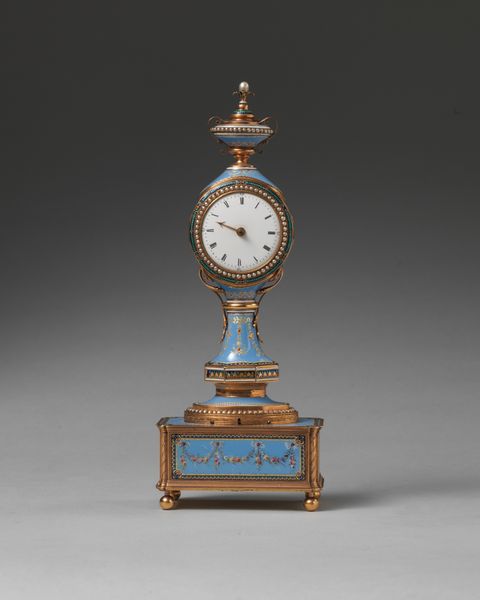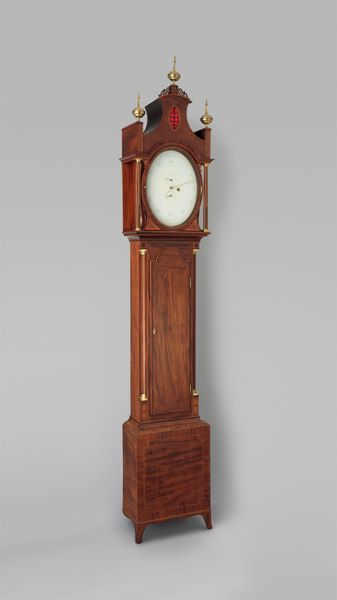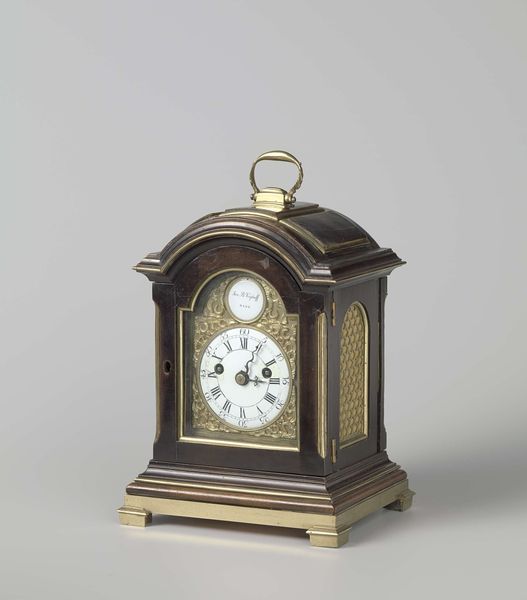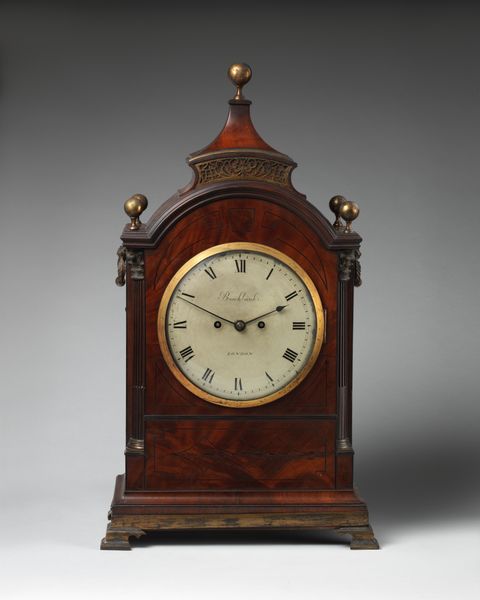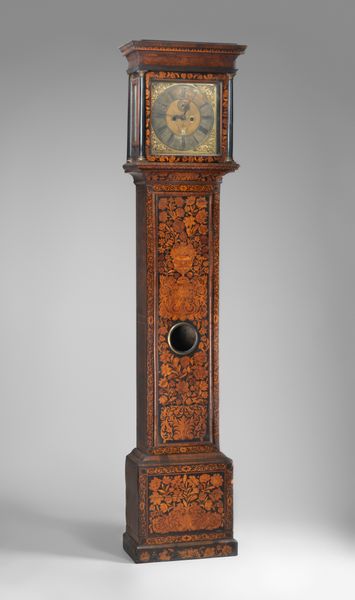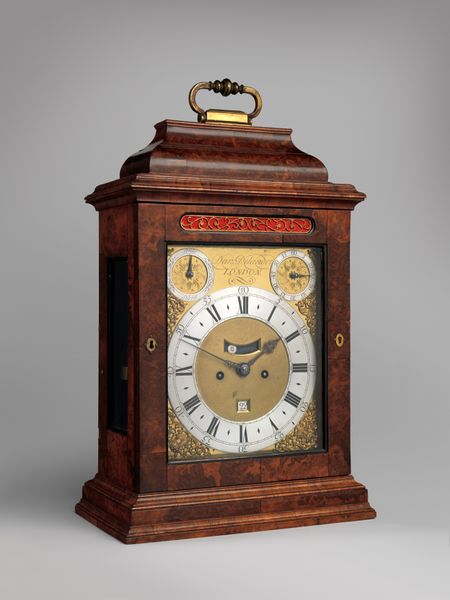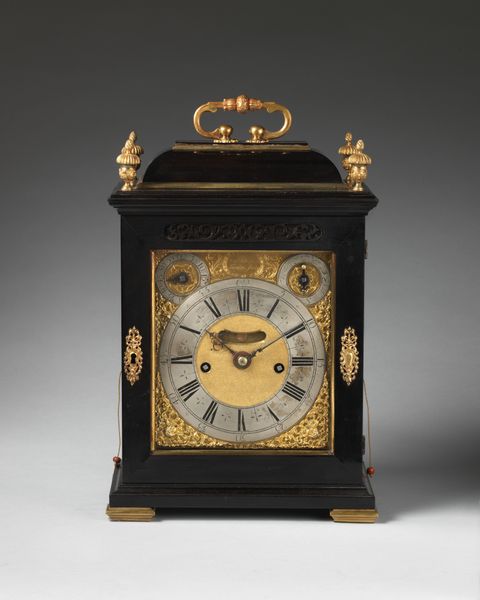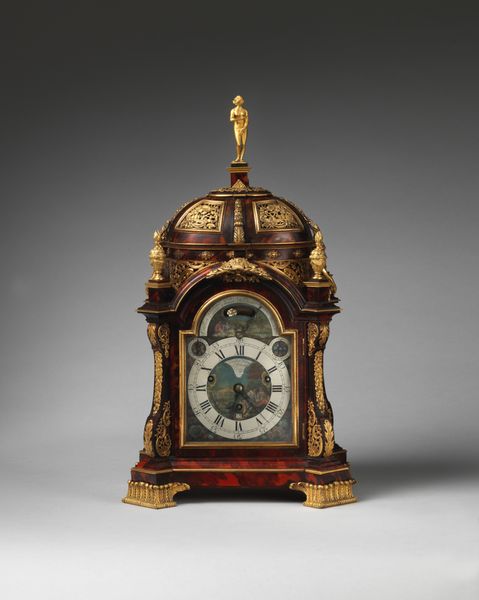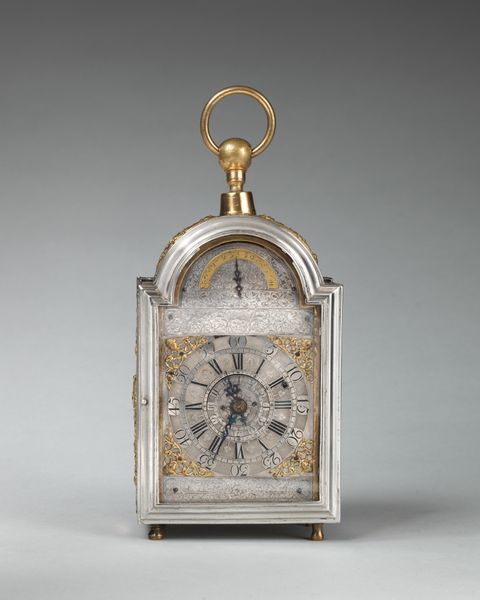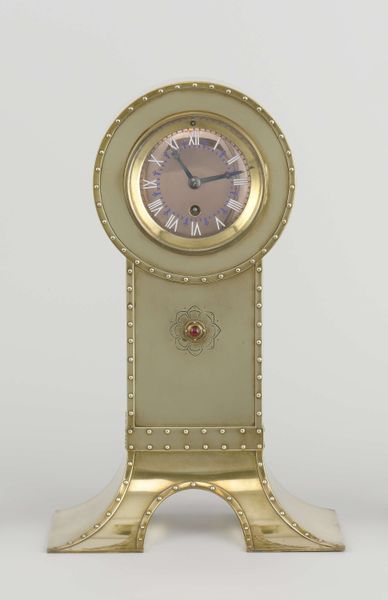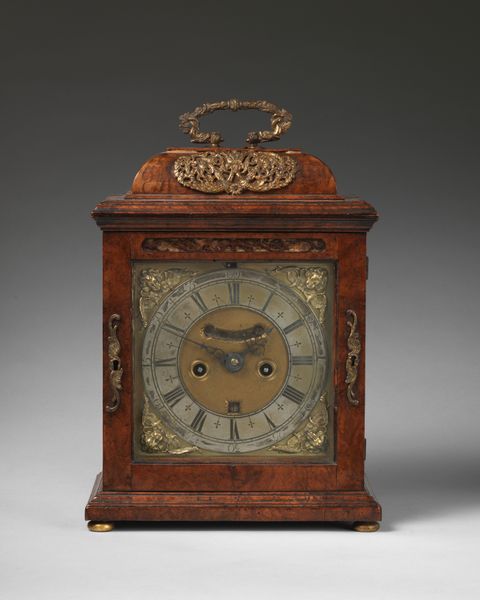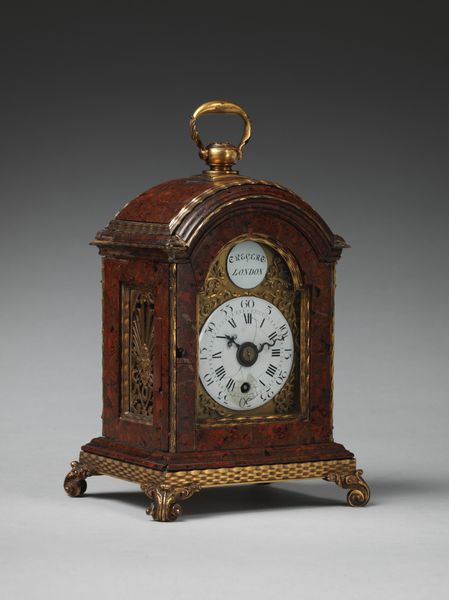
brass, metal, glass, wood
#
portrait
#
neoclacissism
#
brass
#
metal
#
glass
#
wood
#
decorative-art
Dimensions: 29 1/2 x 10 1/4 x 10 1/4 in. (74.9 x 26 x 26 cm)
Copyright: Public Domain
Editor: Here we have Simon Willard's "Clock," crafted between 1825 and 1830, incorporating wood, glass, brass and metal. It reminds me a little of a monument. What strikes you about it? Curator: I see this not just as a time-telling device but as a cultural artifact embedded in the socio-political currents of its time. The clock's Neoclassical design, while seemingly innocuous, speaks volumes about the aspirational values of the emerging American elite in the early 19th century. How does this pursuit of European aesthetics intersect with the young nation's identity formation and its relationship to power? Editor: That's a really interesting point. I hadn't considered how the adoption of Neoclassical style was connected to the social values of that time. Is there also a symbolic value in containing time? Curator: Precisely. Timepieces during this era became potent signifiers of control, progress, and the rationalization of daily life. The elite, who could afford such luxuries, effectively declared their dominion over time, differentiating themselves from the laboring classes whose lives were governed by the rhythms of nature. It represents the onset of a cultural shift towards measuring labor that directly served the powerful. What is striking here is the bell jar which serves both to highlight, frame, and preserve time itself. This preservation has interesting parallels with contemporaneous political and social perspectives of control and stasis. It is also impossible to ignore that we’re viewing this in the Met in 2024. What is highlighted, preserved, and kept safe in our museums and what isn’t? Editor: Wow, I will definitely look at the clock differently now. I hadn't considered the object as embedded in larger cultural shifts. Thanks so much. Curator: It’s about situating these artifacts within a matrix of power dynamics and historical narratives. The decorative arts are rife with these loaded references if you have the tools to begin that journey.
Comments
No comments
Be the first to comment and join the conversation on the ultimate creative platform.
